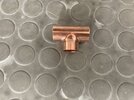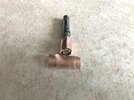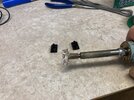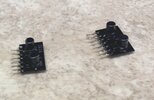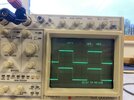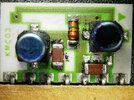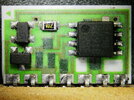Steve Rawllings
New Member
I have a Kenwood CS-6040 oscilloscope with a similar fault to that described by 'fezder' at:
As the previous thread has been closed, I've started this one.
In my 'scope, neither the variable 'HIC' attenuator module for Channel 1, nor the HIC module for Channel 2 responds to the variable gain control voltage derived from their respective front panel controls. Although the calibration of Channel 1 is unaffected, Channel 2 is only reading about one seventh of the true VOLTS/DIV.
For now, I'm assuming that the HIC module has failed in a convenient manner for Channel 1, but the corresponding HIC has failed in a 'lossy' manner in the Channel 2 vertical amplifier.
Before I remove the HICs from the PCB, I'd appreciate any comments from others who have experience of these HIC modules, especially regarding possible alternative modules, or suitable home made attenuators.
Regards to all
Steve
As the previous thread has been closed, I've started this one.
In my 'scope, neither the variable 'HIC' attenuator module for Channel 1, nor the HIC module for Channel 2 responds to the variable gain control voltage derived from their respective front panel controls. Although the calibration of Channel 1 is unaffected, Channel 2 is only reading about one seventh of the true VOLTS/DIV.
For now, I'm assuming that the HIC module has failed in a convenient manner for Channel 1, but the corresponding HIC has failed in a 'lossy' manner in the Channel 2 vertical amplifier.
Before I remove the HICs from the PCB, I'd appreciate any comments from others who have experience of these HIC modules, especially regarding possible alternative modules, or suitable home made attenuators.
Regards to all
Steve

